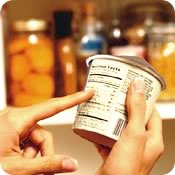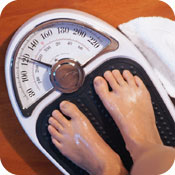
Looking at cholesterol on the mac and cheese label, the FDA says that you are getting 30 mg and this is 10% of the recommended amount of cholesterol for a person eating about 2,000 calories per day. (Remember, you're getting 20% if you ate the whole package.) So how do you know if 10% is a good or bad number? For ease of explanation, let's break this down into a guide that will helps us look at a percent and immediately know if it is high or low for one food source. The magic numbers are 5 and 20%. Anything listed in the percent daily value column that is 5% or less is a low number for nutrients. This is a good range for things that you want to limit (fat, saturated fat, cholesterol, and sodium), but too low for things you want to eat plenty of (fiber, calcium, and vitamins). Anything listed as 20% or more is high. This is a bad range for things that you want to limit (fat, saturated fat, cholesterol and sodium), but a good range for things you want to eat plenty of (fiber, calcium, and vitamins). Use 5 and 20% as benchmarks when interpreting numbers between 6 and 19% (look at what is closer to "high" or closer to "low"). Look at "Total Fat" on the mac and cheese label. The 18% daily value is close to the high point, but if you ate the whole package, you actually ate 36% of the recommended daily amount of fat (well above our benchmark of 20%!). That amount, coming from just one source of food in a day, contributes a lot of fat to your daily diet. It would leave you 64% (100% - 36% = 64%) of your fat allowance for all other meals, drinks, and snacks you would eat that day. The percent daily value also offers a great way to watch your diet without completely giving up your favorite foods. For example, if you ate one serving of macaroni and cheese but ensured you had a low fat intake for all other foods you ate that day, you made a successful trade-off. When you really want a food that is high in fat, always balance it with healthy low-fat foods in the same day. Quick Interpretation Guide
|






Member Comments